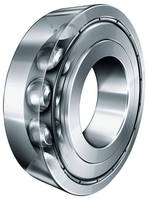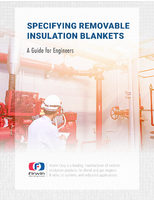Novel Bearings Enable a Step Change in Energy Efficient Machines and Vehicles

In a world where reducing carbon emissions and improving energy efficiency are top of the agenda, the Schaeffler Group has responded by developing a range of innovative rolling bearings that are helping customers produce more energy efficient, greener products.
Manufacturers are under increasing pressure to reduce energy consumption, both within their own production plants and by developing more energy efficient products for customers. Every day, new energy efficient products are being developed, whether it's the latest electric motor, aircraft engine or machine tool.
The Schaeffler Group has responded to this requirement by developing a range of innovative, energy efficient bearings that help reduce the overall energy consumption in power transmission systems and machines.
Schaeffler's new range of deep groove ball bearings, for example, offer 35% less friction and 50% less noise than their predecessor. The new bearings also benefit from more effective sealing and a new riveted steel cage. The new 'Generation C' FAG deep groove ball bearing achieves higher running speeds and efficiencies, whilst simultaneously increasing the life of the bearing and reducing energy consumption.
By optimising the raceway curvature between the balls and rings, these bearings produce 35% less friction because they generate less heat, which makes them suitable for higher running speeds. They are therefore ideal for applications in which low noise and smooth running are critical. This includes electric motors, power tools, ventilators and washing machines, where reduced friction and improved energy efficiency of the bearings lead to a reduction in operating costs and a more efficient machine with extended maintenance intervals.
Schaeffler has also modified the seal on the Generation C bearings. The HRS seal is made from nitrile butadiene rubber and has modified double lip geometry. The seals are adjusted to match the recess on the bearing inner ring. Axial contact between the inner ring and the seal means more effective protection against contamination or loss of grease and frictional torque. This results in longer grease life, increasing the life and reliability of the bearing and provides improved bearing performance at higher speeds.
Venting grooves have also been added in order to improve the run-in behaviour of the bearings. In addition to the HRS seal, the bearing shield has been modified. The recesses on the bearing rings and the shield geometry are functionally adjusted to each other in such a way that the sealing efficiency is improved and grease life increased. The new design creates an axial and radial labyrinth with the shield.
The improved guidance of the rolling elements also contributes to higher performance of the bearing. The new riveted steel cage, which replaces the previous steel 'ribbon' cage, offers higher rigidity and so is suitable for higher running speeds. The riveted steel cage also reduces noise levels and means the bearing is less sensitive to shock loads. The manufacturing tolerance of the bearings has also been increased (to P5 Abec 5 standards), ball roundness to G5 tolerances and improved surface finish.
The Ball Roller
Another significant breakthrough from Schaeffler is the 'ball roller', a new energy efficient range of bearings that utilise spherical bearing elements, but with their sides cut off. While the design sounds simplistic, the research and development behind this radical breakthrough has been significant, spanning several years and various prototypes. The ball roller is also based on new assembly methods developed at Schaeffler.
The result is a range of ball roller elements that offer all the axial load handling capabilities of fully spherical balls, but more importantly, allow overall bearing width and mass to be decreased by around 20%, as well as reducing friction. It means that in the same design space, it is now possible to carry greater loads and provide a larger grease reservoir or more space for improved sealing.
In the new design, Schaeffler has removed all areas of a conventional rolling element 'ball' that are not under load. This means that 15% of the ball's diameter is cut off on both sides. The result is a flattened ball on both sides, which is 30% narrower than a conventional ball. This not only saves valuable design space, but means that the 'slim' shape of the ball roller, in combination with new assembly methods, enable the number of rolling elements to be increased. This in turn enables the filling capacity of the bearing to be increased by up to 90 %. Using more rolling elements in the same design space results in higher load ratings and longer service life, providing opportunities to downsize products and assemblies.
According to Heinrich Hofmann, development engineer special projects at the Schaeffler Group: "The idea for the ball roller came from our development engineers, who were testing ball bearings and discovered that the spherical balls tended to roll about a single axis and made no use of those areas adjacent to this axis."
In a typical ball bearing, only 70% of the ball width is utilised, so the outer 15% to the left and right of the ball diameter can be considered redundant. This discovery led the company to the idea of cutting off this 'redundant' material from the sides of the balls.
The development team realised that cage design would be critical to the new bearing. As Hofmann explains: "Because the balls cannot be allowed to greatly change their rotation axes, cage design was crucial. The critical conditions occur during initial rotation. Once the bearings are moving under conditions of speed and load, they become self-locating, like a bicycle wheel."
In addition, having moved away from a fully spherical shape, it is possible to give the roller a logarithmic profile, since the rotational axis is always perpendicular to the variable contact angle. The osculation conditions - the 'kiss' between the roller and the bearing groove - therefore do not change. If the load ratio changes from axial to radial and the contact angle changes as a result, the osculation 'creeps' in an optimum manner with the change in load.
Schaeffler's standard 6207 ball bearing (DIN 625) incorporates nine rolling elements, which equates to a fill capacity of around 60%. In comparison, the new BXRE207 ball roller bearing contains 14 rolling elements in the same space. Here, the filling capacity is increased to 90%; the bearing life is 2.4 times longer.
Schaeffler's single row BXRE bearing offers higher load carrying capacity than a standard ball bearing in the same design space. This is due to a 50% increase in the number of rolling elements by using innovative assembly methods. The resulting filling capacity is around 90%, which means the BXRE bearing can withstand extreme loads. The bearings are therefore ideal for the downsizing of products and assemblies, as they require less radial space with the same shaft diameter and the same load ratings. Typical application examples are electric motors, washing machines, power tools and industrial gearboxes.
The BXRO range of ball roller bearings are double row bearings with the rolling elements in an 'O' arrangement, enabling the bearings to support both radial and axial forces. Compared to Schaeffler's Series 32 ball bearings, up to 50% more rolling elements can be fitted in the ball roller. The advantage of the BXRO over the 33 Series (which has two inner rings) is in the simplified installation of the inner ring on the shaft. The optimised raceway geometry of the single-piece inner ring results in increased bearing accuracy. Applications include automotive manual transmissions and textile machinery.
The BXRT ball roller series is a double row design with the rows of ball rollers in a tandem arrangement. The rolling elements can be guided using one or two cages. The two-cage design enables the optimal adjustment of the two raceways independently of each other to perfectly match the application. This ensures maximum load support with minimum size and reduced friction. Compared to tapered roller bearings, friction is reduced by around 30% due to the elimination of rib friction. This means that energy consumption can be significantly reduced, leading to applications in manual transmissions, differentials, hydraulic motors and pumps.
Schaeffler has also launched a special ball roller bearing for use as a wheel bearing, reducing friction and weight in passenger cars and commercial vehicles. The four-row, BXR4 wheel bearings offer higher load carrying capacity and therefore enable more compact designs than conventional wheel bearings. The new bearings are ideal for driven axles. Reduced friction and reduced weight of the bearing and wheel carrier contribute significantly to reduced fuel consumption and exhaust emissions.
With a total of 66,000 employees at over 180 locations around the globe and group sales of 8.9 billion euros (fiscal year 2008), the Schaeffler Group is one of the world's leading rolling bearing manufacturers and automotive component suppliers. The corporate group includes the INA Group with headquarters in Herzogenaurach, the FAG Group based in Schweinfurt as well as the LuK Group, with headquarters in Bühl.
Dean Palmer
Director
SilverBullet PR Ltd
Tel: 01780 753 000
Mobile: 07703 023 771
Email: dean@silverbulletpr.co.uk
www.silverbulletpr.co.uk
Schaeffler (UK) Ltd,
Forge Lane
Minworth
Sutton Coldfield
West Midlands B76 1AP
Tel: 0121 351 3833
Fax: 0121 351 7686
e-mail: info.uk@schaeffler.com
www.schaeffler.co.uk




